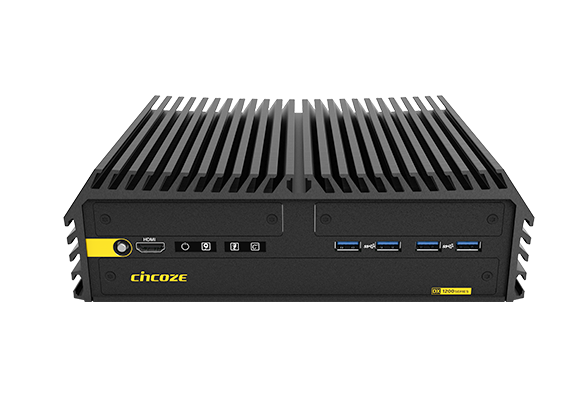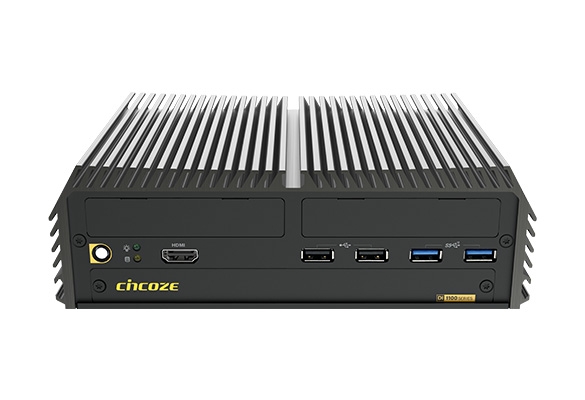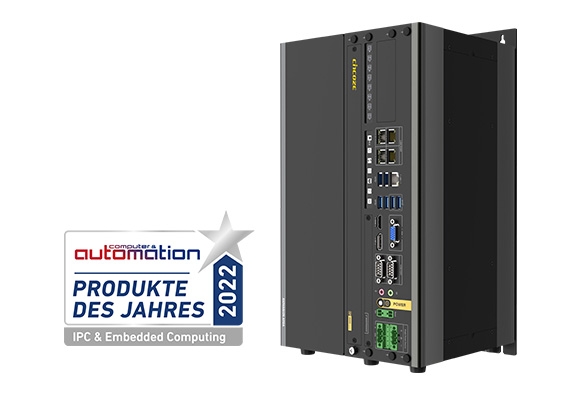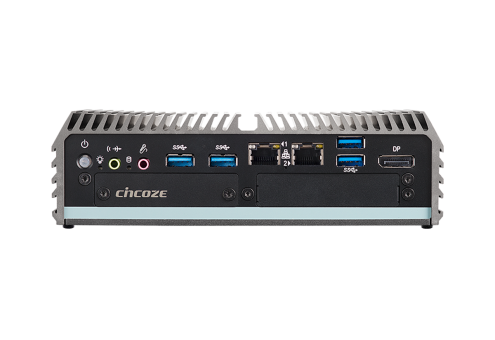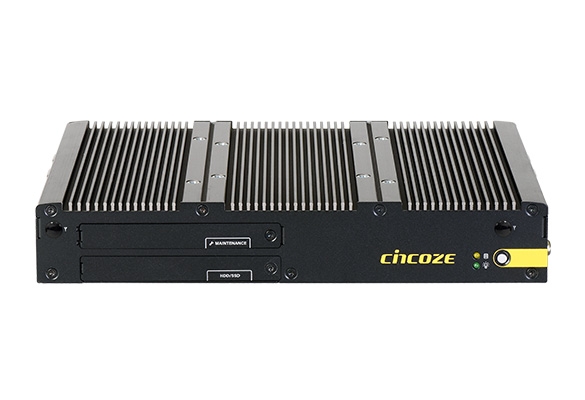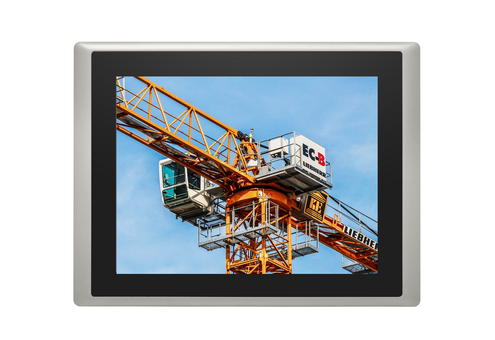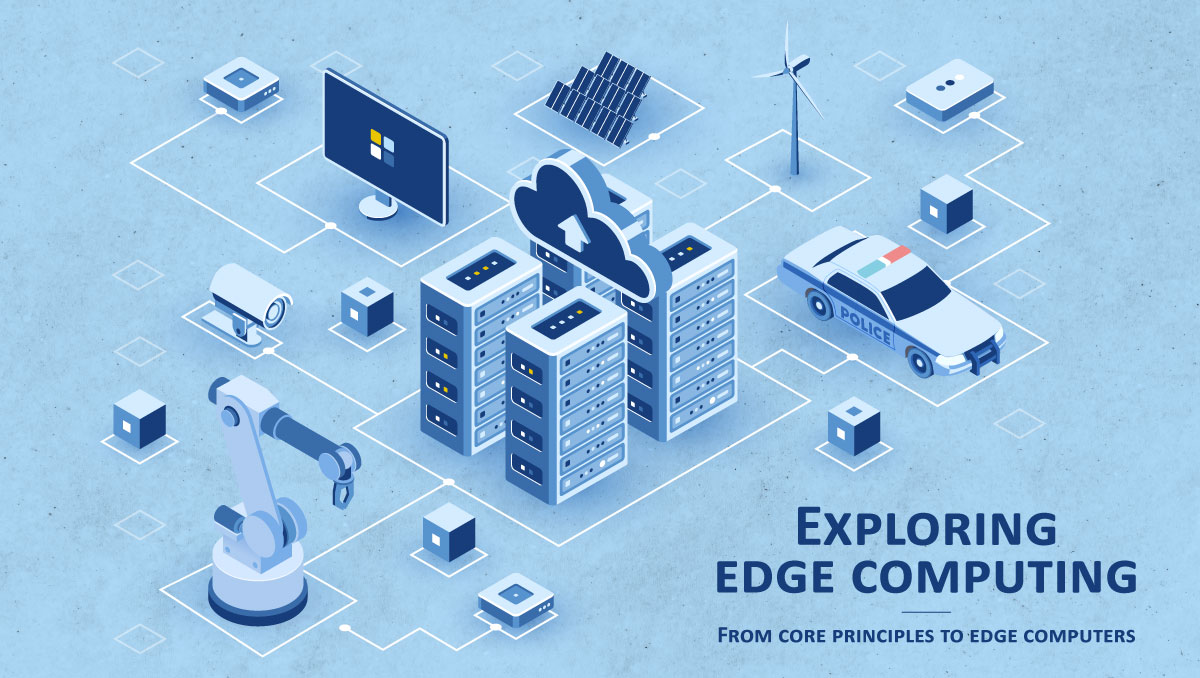
Exploring Edge Computing: From Core Principles to Edge Computers
Edge computing is a distributed computing architecture that allows fast and accurate analysis and processing of data at the source to ensure immediate and rapid response. This contrasts sharply with the centralized computing strategy of the past, where data relied entirely on the cloud or a central data center. With the rise of AI technology and the proliferation of smart devices, the scale and complexity of data are rapidly increasing. Especially in fields such as smart warehousing, vision-oriented manufacturing processes, or traffic management in smart cities, data transmission needs often exceed the capacity of the network. Coupled with the increasing technological advancement in industrial computers, cameras, mobile terminals, sensors, and various Internet of Things (IoT) devices, the speed of data generation and collection continues to increase. Relying solely on central data centers can no longer meet existing needs, so now, edge computing has progressed from a simple trend to the best solution.
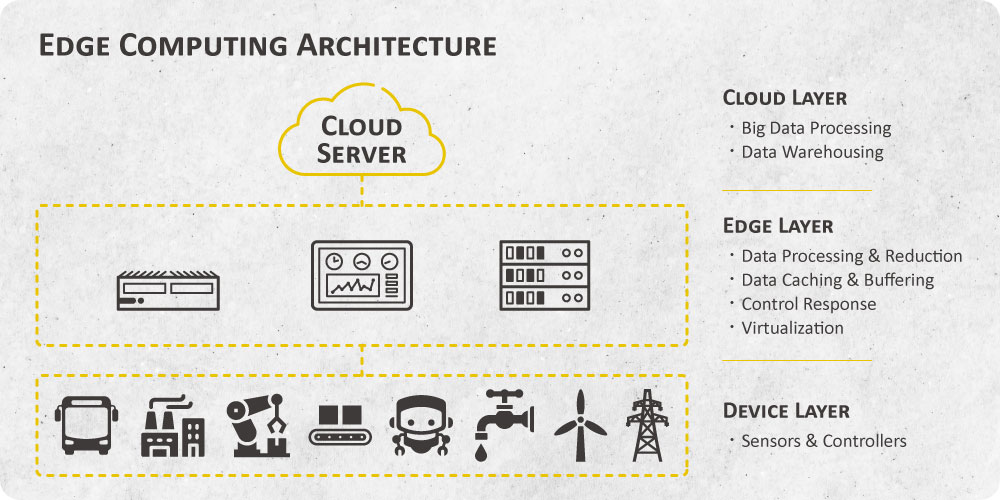
Edge Computing Architecture
Typical edge computing architecture can be divided into three layers: the device layer for data collection, the edge layer for real-time data processing, and the cloud layer responsible for secure storage and deep analysis.
- Device Layer :This layer covers various types of IoT devices, each collecting and monitoring data through built-in sensors. For example, medical instruments in hospitals focus on monitoring patients’ vital signs, while autonomous vehicles gather data on road conditions and the dynamics of other vehicles.
- Edge Layer :As the core of edge computing, the edge layer is located closest to the source of data generation and has a wider distribution than traditional cloud servers. It can perform real-time data processing and analysis, significantly reducing latency. If data requires deeper analysis, it is uploaded to the cloud layer for further processing.
- Cloud Layer :Although cloud computing addresses bottlenecks and latency issues in cloud computing, in a complete edge computing architecture, cloud computing and edge computing complement each other. When the edge layer determines that some data requires more detailed analysis, it uploads this data to the cloud layer for deeper computation and storage.
Five Advantages of Edge Computing
- Rapid Response and Improved Efficiency
In highly automated industries such as factory production lines, real-time data transmission and processing are crucial. Real-time monitoring and corrective actions in the event of machine anomalies significantly reduce production downtime and potential risks. - Enhanced Data Security
Edge computing processes and stores most data on-site, encrypting necessary data before transmitting it back to central data centers, ensuring data security. - Leap in Productivity
Enterprises can improve operational efficiency through real-time data feedback. Combined with artificial intelligence and machine learning, edge computing can perform in-depth analysis of business data, helping companies identify areas for improvement and make rapid decisions. - Remote Data Collection
Traditional data collection methods often encounter difficulties in remote areas with unstable network connections or limited bandwidth, such as offshore oil fields or vessels. Edge computing brings computing and storage capabilities directly to these remote locations, ensuring smooth data collection and transmission. - Cost Optimization
Transmitting large amounts of data consumes a significant amount of bandwidth and comes with relatively high setup costs. However, the edge computing architecture allows selective transmission of essential core data, reducing overall setup expenses.
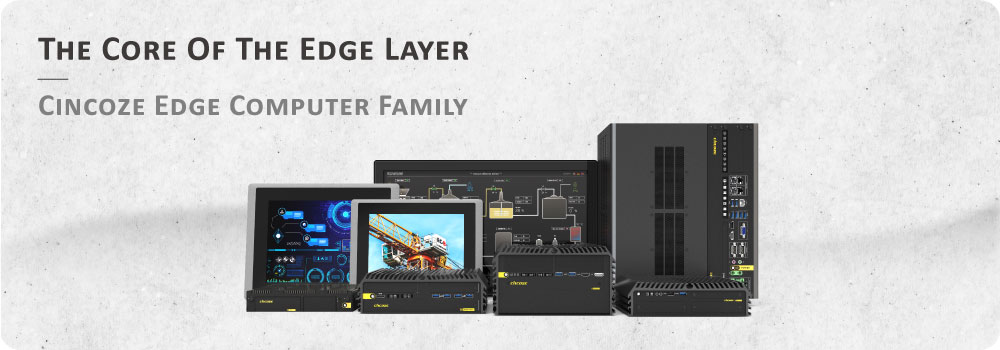
The Core of the Edge Layer - Edge Computer
As the core system component of the edge layer, the edge computer is responsible for processing and analyzing data collected from the device layer. To execute tasks quickly and robustly, edge computers require the following features.
- High Durability
Because edge computers are located close to the device layer, they must maintain superior reliability in ever-changing and harsh environments. This becomes especially important when these devices are exposed to extreme climates or challenging environments. Fanless design ensures stability even in polluted, dusty, or humid environments. Additionally, shock resistance and vibration tolerance are essential when operating in high-vibration environments. - Outstanding Performance
Edge computers need to be able to efficiently analyze and store data from the device layer, making performance a critical factor. The increasingly complex data analysis challenges are also accelerating with the rapid evolution of AI technology. To meet these demands, edge AI computers have emerged. In addition to supporting multi-core CPUs, they also feature GPUs specifically designed for real-time image processing. - Rich I/O, Connectivity, and Storage
To ensure direct connectivity with various devices, edge computers need a selection of commonly used I/O interfaces. For connectivity, options such as WiFi, 4G, 5G, GNSS, and Bluetooth, in addition to wired transmission, ensure seamless connections in different field scenarios. Furthermore, considering the vast amount of data collected from the device layer, edge computers also support options for large-capacity or high-speed storage. - Industrial-grade Protections
Edge computers are often deployed in remote or harsh environments. Therefore, having industrial-grade protection features becomes crucial. Features like wide voltage support, ESD protection, surge protection, and EMC protection ensure efficient and stable operation under various conditions. - Flexible Installation Options
Edge computers are frequently deployed in space-constrained areas and various other locations, so a variety of installation options is necessary. Whether it's wall mounting, VESA mounting, DIN rail mounting, or panel mounting, these options offer users multiple deployment choices to meet different application needs.
Edge Computing Use Cases
- Manufacturing
- X-ray Inspection
X-ray inspection has become a non-destructive, high-precision, and efficient choice for quality assurance. It plays a major role in the automotive, aerospace, electronics, and other industries. A European X-ray inspection system manufacturer chose the Cincoze DS-1302 industrial pc as the core platform for its X-ray automated quality management inspection system. - Produce Sorting
Automation replaces manual judgment, significantly reducing error rates and speeding up work efficiency. A European food machinery manufacturer chose to use the Cincoze DS-1002 industrial pc combined with image recognition technology to further enhance the quality and efficiency of vegetable and fruit sorting. - Smart Spinning
Smart, automated spinning systems integrate sensor technology and edge data collection capabilities. They achieve intelligent monitoring, energy management, and predictive maintenance through a cloud control center. A renowned European spinning manufacturer integrated the Cincoze P2102E into its machines, along with proprietary software, to achieve remote automated management and high-efficiency production.
- X-ray Inspection
- Transportation
- Automated Track Inspection Vehicles
Track safety is critical for train operations, so performing regular inspections and monitoring are critical for ensuring train safety. A European railway system engineering company installed the Cincoze GP-3000 on automated track inspection vehicles to accurately identify and assess any defects on the tracks. - Unmanned Mining Vehicles
In the harsh and highly hazardous mining industry, the deployment of intelligent autonomous driving mining vehicles operating 24/7 improves productivity. A U.S. unmanned mining vehicle manufacturer chose the DI-1000 embedded computer to ensure the vehicles' autonomous operation and remote monitoring. - Smart Police Cars
Smart police cars play an important role in maintaining safety in smart cities. By connecting to city data centers, they provide more precise support for traffic management and emergency response. License plate recognition enables quick detection of problematic or stolen vehicles, helping to combat criminal activities. A European military equipment company installed the Cincoze DX-1100 industrial pc in police cars for license plate recognition and monitoring, enhancing police efficiency.
- Automated Track Inspection Vehicles
- Energy
- Offshore Automated Oil Rigs
In offshore or remote oil and gas extraction, real-time data monitoring and remote management are crucial for operations. To ensure accurate real-time data acquisition and effective equipment monitoring, Cincoze's Eastern European customer chose high-brightness and high-performance CS-115/P2102E industrial panel pc, making them the core of edge computing for offshore drilling. - IoE Gateway
Integration of energy and the internet combines renewable energy nodes with the power grid to achieve better energy efficiency and management. It not only collects energy data from various distributed sources but also precisely adjusts power distribution through big data analysis. To achieve this goal, a leading European energy company chose the DC-1200 as an IoE Gateway to monitor its solar energy systems, conduct in-depth data analysis, and perform predictive maintenance. - Oilfield Surveillance System
Establishing a surveillance system for remote oil fields is crucial to prevent theft or deliberate equipment damage. Cincoze's U.S. customer provides solar monitoring solutions for various industries, using wireless transmission for real-time monitoring and rapid alerts. They chose the DI-1000 edge computer to ensure smooth and stable remote monitoring.
- Offshore Automated Oil Rigs
Embedded Computer ∣ Fanless PC ∣ Panel PC ∣ GPU Computer ∣ Rugged Computer ∣ Industrial PC ∣ Edge AI ∣ Edge Computer ∣ Industrial HMI
